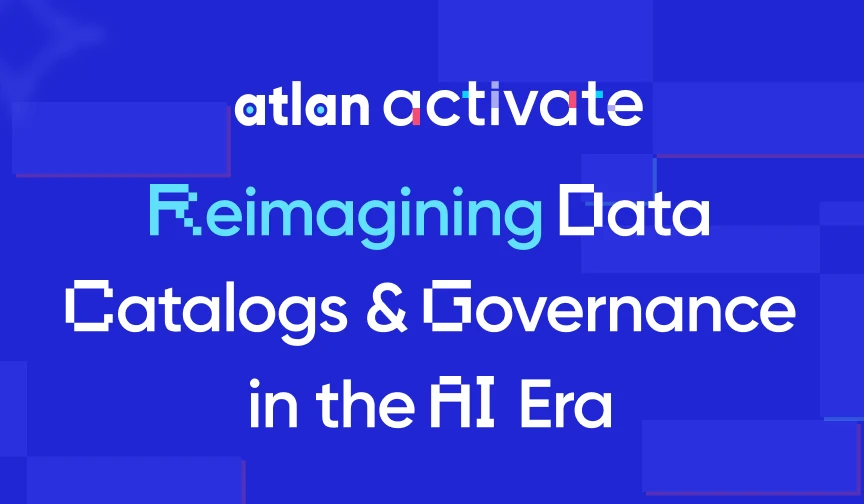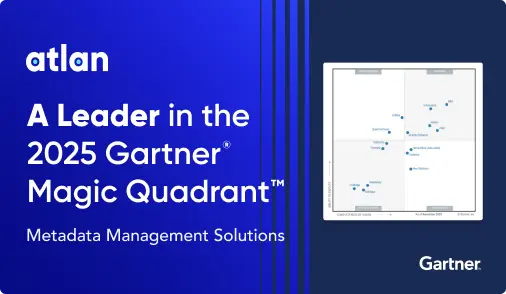Backfilling Data Guide: The Ultimate Manual for 2024

Share this article
Backfilling data is a meticulous process of rectifying historical discrepancies, updating new systems, and maintaining the integrity of vital information.
In this article, we will what is data backfilling, and offer insights into its challenges and best practices that will empower you to tackle it with confidence. That also includes the intricacies of identifying data anomalies, the art of choosing the right backfilling strategy, and more.
Let us get started!
Table of contents
Permalink to “Table of contents”- 5 Reasons why data backfilling is important
- Backfilling data guide: A SOP
- What is the best strategy to backfill data?
- Common challenges you may encounter
- Summarizing it all together
- Related reads
5 Reasons why data backfilling is important
Permalink to “5 Reasons why data backfilling is important”Data backfilling refers to the process of retroactively filling in missing or incorrect data in a dataset, typically within a data warehouse or a database. This practice is essential when historical data has been omitted, erroneous records have been introduced, or new systems need to incorporate past data that wasn’t previously available.
These are the 5 reasons explaining the importance of data backfilling:
- Historical accuracy for informed decision-making
- Maintaining data consistency and integrity
- Facilitating meaningful analytics and reporting
- Regulatory compliance and auditing
- Enhancing data ecosystem longevity
Let us understand each of them in detail:
1. Historical accuracy for informed decision-making
Permalink to “1. Historical accuracy for informed decision-making”Data backfilling is vital for preserving historical accuracy within datasets. Inaccurate or missing historical data can lead to skewed insights and decisions based on incomplete information.
For example, when analyzing sales trends over time, accurate historical data ensures that decisions are well-informed and aligned with the organization’s goals.
2. Maintaining data consistency and integrity
Permalink to “2. Maintaining data consistency and integrity”Data consistency and integrity are the cornerstones of reliable data analysis. Backfilling helps maintain data consistency by filling gaps caused by data anomalies or system changes.
Without backfilling, data inconsistencies could lead to unreliable results and undermine the trust stakeholders have in the data.
3. Facilitating meaningful analytics and reporting
Permalink to “3. Facilitating meaningful analytics and reporting”Effective analytics and reporting rely on complete and accurate datasets. Backfilling ensures that historical data is available for analysis.
This enables organizations to identify patterns, trends, and anomalies that might otherwise go unnoticed. This contributes to more accurate forecasting, risk assessment, and strategic planning.
4. Regulatory compliance and auditing
Permalink to “4. Regulatory compliance and auditing”Many industries are subject to regulatory requirements that mandate accurate and comprehensive data retention. Backfilling is crucial for maintaining a robust audit trail and demonstrating compliance.
It helps organizations adhere to legal and industry-specific regulations by ensuring that all historical data is accurately recorded and accessible when needed.
5. Enhancing data ecosystem longevity
Permalink to “5. Enhancing data ecosystem longevity”Organizations continuously evolve, and their data ecosystems must adapt accordingly. Backfilling helps ensure that data from legacy systems or processes remain relevant and usable in modern contexts.
This longevity is especially important when transitioning to new technologies or migrating data to updated platforms, as the historical context remains intact.
It upholds the accuracy, integrity, and usability of data, enabling organizations to extract meaningful insights and drive success in an increasingly data-driven world.
Backfilling data guide: A SOP for better results
Permalink to “Backfilling data guide: A SOP for better results”Data backfilling is a critical process that ensures the accuracy and integrity of data within data warehouses and SaaS tools. This SOP/manual outlines the best practices, to effectively perform data backfilling, minimize errors, and maintain data quality, which include:
- Preparation phase
- Data transformation and cleansing
- Backfill implementation
- Data validation
- Error handling and rollback
- Documentation
- Communication
- Continuous improvement
Let us understand each of the steps in detail:
1. Preparation phase
Permalink to “1. Preparation phase”- Data analysis: Before initiating any backfilling process, conduct a thorough analysis of the data quality issue or anomaly that prompted the need for backfilling. Identify the affected data points, records, and the timeline for which data needs to be backfilled.
- Backup: Always create a backup of the existing data before beginning the backfilling process. This ensures that in case of any unforeseen issues, you have a copy of the original data to revert to.
- Data mapping: Create a clear mapping of the data to be backfilled. Identify the source of the correct data and the target fields in the data warehouse or SaaS tool.
2. Data transformation and cleansing
Permalink to “2. Data transformation and cleansing”- Data cleansing: Before inserting backfilled data, cleanse it to ensure consistency and accuracy. This includes removing duplicates, correcting formatting issues, and addressing missing values.
- Data Transformation: If the format of the backfilled data differs from the existing data, perform any necessary transformations to ensure compatibility.
3. Backfill implementation
Permalink to “3. Backfill implementation”- Batch processing: To prevent system overload, break down the backfill process into manageable batches. This minimizes the impact on system performance.
- Incremental backfill: For large datasets, consider performing incremental backfilling. This involves backfilling data in smaller time intervals, allowing for better monitoring and error detection.
- Data relationships: Pay attention to data relationships when performing backfilling. Ensure that related data is backfilled consistently to maintain referential integrity.
4. Data validation
Permalink to “4. Data validation”- Validation queries: After backfilling each batch, run validation queries to compare the backfilled data with the original source. This step helps identify discrepancies and errors early in the process.
- Automated Tests: Develop automated tests to validate the integrity of the backfilled data against predefined quality metrics. This ensures that the backfilled data meets the required standards.
5. Error handling and rollback
Permalink to “5. Error handling and rollback”- Error monitoring: Monitor the backfilling process closely for any errors or anomalies. Implement logging and alerting mechanisms to quickly identify and address issues.
- Rollback plan: Have a well-defined rollback plan in case critical errors are detected during the backfilling process. This plan should outline steps to revert to the original data state and address the underlying issues.
6. Documentation
Permalink to “6. Documentation”- Process documentation: Document each step of the backfilling process, including data sources, transformations, validation methods, and any issues encountered. This documentation serves as a reference for future backfilling needs.
- Lessons learned: After completing the backfilling process, conduct a post-mortem analysis to identify areas for improvement. Document any lessons learned to enhance future backfilling efforts.
7. Communication
Permalink to “7. Communication”- Stakeholder communication: Inform relevant stakeholders, including data analysts, data scientists, and business users, about the backfilling process, its purpose, and potential impacts on reporting and analytics.
- Progress updates: Provide regular updates on the progress of the backfilling process to stakeholders to keep them informed and manage expectations.
8. Continuous improvement
Permalink to “8. Continuous improvement”- Process review: Periodically review and update the backfilling SOP to incorporate new learnings, best practices, and technological advancements.
- Automation opportunities: Explore opportunities to automate certain aspects of the backfilling process, such as data validation and error handling, to improve efficiency and reduce manual effort.
By following this comprehensive SOP for data backfilling, data engineers and software engineers can navigate the process with precision, minimize errors, and maintain high data quality standards within data warehouses and SaaS tools.
What is the best strategy to backfill data?
Permalink to “What is the best strategy to backfill data?”Crafting an effective strategy for data backfilling is the key to harmonizing the past and the present, ensuring that insights derived from analytics are rooted in a solid foundation.
Let us now look at an optimal strategy for backfilling data—a strategy that not only rectifies gaps but elevates the data’s role as a cornerstone of decision-making, analytics, and strategic growth:
- Define clear objectives
- Prioritize data sets
- Choose appropriate timeframes
- Segmentation and batching
- Validate source data
- Data consistency
- Establish data dependencies
- Data transformation considerations
- Run parallel processes
- Monitor progress
Let us understand the above aspects in detail:
1. Define clear objectives
Permalink to “1. Define clear objectives”- Defining clear objectives sets the foundation for a successful backfilling process.
- This step involves identifying the purpose of the backfill—whether it’s addressing data anomalies, historical accuracy, or system migration.
- Without clear objectives, the backfilling process can lack direction, leading to inefficient resource allocation and potentially missing the mark in terms of the data’s intended outcome.
- Clearly outline the purpose and goals of the data backfilling process.
2. Prioritize data sets
Permalink to “2. Prioritize data sets”- Prioritizing data sets helps allocate resources effectively.
- Identify which data sets are most critical for ongoing operations, reporting, or analysis.
- By focusing on high-priority data, you can ensure that the most essential information is backfilled first, minimizing the impact of data gaps on critical functions.
- Evaluate the impact of different data sets on reporting, analytics, and decision-making.
- Prioritize data sets that have the highest business significance or potential for error.
3. Choose appropriate timeframes
Permalink to “3. Choose appropriate timeframes”- Selecting appropriate timeframes is crucial to aligning the backfilling process with the data quality incident or business need.
- This strategy prevents unnecessary backfilling of irrelevant historical data and ensures that the process is targeted and efficient.
- Select specific timeframes or date ranges that correspond to the data quality incident.
- Backfilling only relevant periods minimizes the scope and complexity of the process.
4. Segmentation and batching
Permalink to “4. Segmentation and batching”- Dividing the backfilling process into smaller segments or batches helps manage the complexity and potential impact on system resources.
- By handling smaller chunks of data at a time, you can minimize disruptions, monitor progress more effectively, and rectify issues on a more manageable scale.
5. Validate source data
Permalink to “5. Validate source data”- Validating the source data before backfilling is essential for ensuring the accuracy and reliability of the data being inserted.
- This step involves identifying any discrepancies or anomalies in the source data, rectifying them before the backfill, and preventing the propagation of errors.
- Verify the accuracy and quality of the source data before initiating the backfill. Inaccurate source data could lead to compounding errors in the backfilled data.
6. Data consistency
Permalink to “6. Data consistency”- Maintaining data consistency is critical to prevent anomalies and discrepancies.
- As data backfilling involves introducing historical data to the present context, data engineers need to ensure that the backfilled data adhere to the same standards as the existing data.
- This avoids inconsistencies that could affect analytics and reporting.
- Maintain data consistency by backfilling related data points together.
- This prevents data inconsistencies and ensures that interdependent data remains coherent.
7. Establish data dependencies
Permalink to “7. Establish data dependencies”- Recognize data dependencies to ensure the accurate sequencing of backfilling.
- When certain data sets rely on others, it’s crucial to establish a clear order for backfilling to maintain data integrity and prevent issues arising from incomplete or mismatched data.
- Identify any dependencies between data sets that require backfilling.
- Make sure you address these dependencies in the correct order to prevent data integrity issues.
8. Data transformation considerations
Permalink to “8. Data transformation considerations”- Addressing data transformation is essential when source and target data formats differ.
- Data engineers need to evaluate potential transformations required to align the backfilled data with the current data ecosystem, ensuring compatibility and usability.
- Assess if any data transformations are necessary to ensure that the backfilled data matches the existing data format and structure.
9. Run parallel processes
Permalink to “9. Run parallel processes”- Running parallel backfilling processes can expedite the overall process and reduce downtime.
- This strategy utilizes available system resources efficiently, speeding up the backfilling process while maintaining data accuracy.
- If your infrastructure allows, consider running parallel backfilling processes.
- This can speed up the process and reduce the time needed for completion.
10. Monitor progress
Permalink to “10. Monitor progress”- Monitoring the backfilling progress in real-time is crucial to detecting issues early.
- Implementing progress tracking and alerting mechanisms allows data engineers to address any anomalies or roadblocks promptly, ensuring a smooth and successful backfilling process.
- Implement monitoring tools to track the progress of the backfilling process.
- This real-time monitoring helps detect any issues or delays early.
By following this detailed strategy, organizations can ensure that data backfilling is executed systematically, accurately, and with minimal disruptions to data warehouses and SaaS tools.
Backfilling data guide: Common challenges you encounter
Permalink to “Backfilling data guide: Common challenges you encounter”The common challenges associated with backfilling data are:
1. Data volume and complexity
Permalink to “1. Data volume and complexity”- Backfilling large volumes of data can strain system resources, impacting performance and causing delays.
- Complex data relationships and dependencies can further complicate the process, requiring careful management and coordination.
2. Data consistency and integrity
Permalink to “2. Data consistency and integrity”- Ensuring consistent and accurate data backfilling is challenging, especially when dealing with interrelated data sets.
- Maintaining data integrity while backfilling becomes crucial to prevent discrepancies or conflicts.
3. Data transformation
Permalink to “3. Data transformation”- When source and target data formats differ, data transformation becomes necessary.
- Handling these transformations accurately and efficiently can pose a challenge, as errors could result in incorrect data being backfilled.
4. Dependencies and sequencing
Permalink to “4. Dependencies and sequencing”- Data often has dependencies, where one dataset relies on another.
- Managing the sequencing of backfilling to maintain data consistency and integrity can be complex and error-prone.
5. Time constraints
Permalink to “5. Time constraints”- Data backfilling must often occur within specific timeframes to address data quality incidents promptly.
- This urgency can lead to rushed processes, potentially overlooking important considerations.
6. Performance impact
Permalink to “6. Performance impact”- Backfilling processes can strain system performance, affecting the overall functionality of the data warehouse or SaaS tool.
- This impact can disrupt ongoing operations and user experiences.
7. Error handling and rollback
Permalink to “7. Error handling and rollback”- Identifying errors during the backfilling process and implementing a reliable rollback plan is essential.
- Failing to manage errors effectively could lead to data loss, inconsistencies, or system downtime.
8. Validation and testing
Permalink to “8. Validation and testing”- Ensuring the accuracy and quality of backfilled data requires comprehensive validation and testing.
- Developing robust validation processes that cover all aspects of the data can be challenging.
9. Stakeholder communication
Permalink to “9. Stakeholder communication”- Keeping stakeholders informed about the progress, potential impacts, and any delays in the backfilling process requires effective communication.
- Miscommunication can lead to confusion and dissatisfaction.
10. Data security and privacy
Permalink to “10. Data security and privacy”- During the backfilling process, data may be temporarily exposed or transferred.
- Ensuring data security and privacy compliance while maintaining seamless operations can be a challenge.
By anticipating and mitigating these challenges, organizations can ensure successful and accurate data-backfilling processes.
Summarizing it all together
Permalink to “Summarizing it all together”Navigating the intricacies of data backfilling is a task that requires meticulous planning, collaboration, and a deep understanding of data ecosystems.
As we’ve explored the challenges that come with backfilling data—ranging from handling data volume and complexity to managing dependencies and sequencing—it’s evident that this process demands attention to detail and a commitment to maintaining data integrity.
By recognizing the importance of data quality and the challenges it presents, organizations can embrace the complexities of data backfilling with confidence, transforming it from a challenge into an opportunity for growth and improvement in the realm of data management.
Backfilling data guide: Related reads
Permalink to “Backfilling data guide: Related reads”- Data Privacy vs Data Security: How & Why They Aren’t Same?
- 8 Data Governance Standards Your Data Assets Need Now
- What is Data Integrity and Why Should It Be a Priority of Every Data Team?
- Data Quality Measures: Best Practices to Implement
- 18 Data Validations That Will Help You Collect Accurate Data
Share this article





















